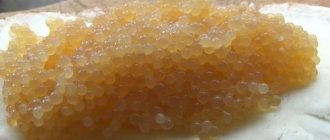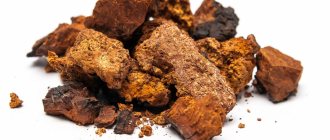Where to begin?
Any job has its own subtleties and some difficulties. Likewise, in fur dressing, there are some moments, some little things, without knowledge of which you will not achieve good results. But they can be overcome if you don’t go at random, but follow the advice of those who have already walked this path.
You can get to work on your own, study all kinds of literature, consider many recipes. At the same time, you will spend a lot of time, master the theory of skin dressing perfectly, but you will not have practical skills, exactly what I had to master by trial and error over a long time. All this will cost you not only wasted time, but also mistakes in the initial stage. Isn’t it better to trust one specialist who will guide you inside and out, providing comprehensive information about tanning hides at home.
If you are interested and want to save your time, I will help you with this and will reveal in detail all the secrets of fur and leather dressing.
I tried to present all my many years of experience in detail in my training video course. Previously, none of this existed, everything had to be collected bit by bit by yourself, so many mistakes were made, and of course there were also losses. That's why I decided to make something like a guide for beginners.
In my training video, I outlined in detail, including the most necessary little things, the entire technology for tanning fox skins at home. Having studied it, you will make your work much easier, save money and time.
How to tan a fox skin?
Nothing could be simpler. For fleshing, it is better to use a dull knife; the tip of the knife is specially rounded. And you have to shave for the “crush”, i.e. do not cut off the fat, but squeeze it out from the rump to the head, removing cuts of meat and film along the way. When the fat stops being squeezed out, wash the skin in a solution of washing powder at the rate of 1 tablespoon per 1 liter of water. Add Fairy detergent there. We wash the skin with the inside out, then with the fur out, rinse the skin in cold water. In general, all solutions for processing should be made in cold water because... at temperatures above 42 degrees, the skin will deteriorate irreversibly. After rinsing I prepare PICKEL. This is a solution of acetic acid at a rate of 10-12 g. for 1 liter of water. Pickel is prepared based on a liquid ratio of 1:4. That is, 7-8 liters of solution are needed for a fox. Add coarse salt N1 to this solution at the rate of 50 g. per liter. Dip the skin into this solution, with the inside out, for 8-10 hours, periodically stirring the skin in the solution. After this period, we take the skin out of the solution, lightly squeeze it out and put the skin to rest for 12 hours. Then tanning. We prepare a solution of chromium-potassium alum at the rate of 7-8g. per liter, plus salt 50g per liter. Also 7-8 liters per fox. We put the skin into the solution, with the inside out, for 12 hours, stirring occasionally. After 12 hours, we take out the skin and wash the fur. I use cheap, but well-working concentrated shampoos in tubes. It takes half a tube for a fox. We turn the skin inside out, and, trying to prevent water from getting inside the skin, rinse the fur. It is better to do this in the bathroom, in cold water, carefully because... The fluffiness of the skin depends on this. If you wash it poorly, the hair will be greasy, the fur will stick together, and the skin will look bad. Further. I stretch the skin onto a straightening board and dry the fur. As soon as it starts to fluff, I turn the skin inside out and hang it on a rope. During this time, the flesh also dries out. We prepare a fat solution while the fur is drying. For 1 liter of water you need: Fish oil - 50g. Aleic acid - 25g. Ammonia - 10g. Two compositions are made. Fish oil is mixed with Aleic acid, and Ammonia with water at a temperature of 30 degrees. In different glass containers (jars). Mix before use. Then spread the hanging skin with this solution from top to bottom with a brush. Without skipping. Leave the skin moistened with this solution to dry. But the most important thing is that you need to constantly stretch slightly. I calculate the dressing process so that this process occurs on the weekend when I am free. The flesh begins to dry out quite quickly; stretching must be done quite often. When the flesh becomes almost dry and does not stretch, we turn the skin inside out and dry the fur, periodically combing it with a comb with long, frequent teeth. When the fur is dry, we turn the skin inside out again and the process of pulling begins. We take a section of the skin and, like washing clothes, we pull at the core. And so on the entire skin. The flesh breaks down and becomes soft. Next, you can lightly sand the inside with fine sandpaper. The skin becomes even more soft. All. This method is good for all our common fur species. Tested hundreds of times. The mesh turns out strong and holds the seam of the sewing machine well. Good luck.
How to remove a fox skin
The value of a fox skin depends not only on the natural qualities of the animal’s fur, but also on the initial processing. Untimely and careless removal of the skin, leaving fat on the flesh, and tendons and bones in the paws and tail, non-standard editing and, finally, drying the skin under unfavorable conditions often reduce its quality so much that a first-class skin turns into waste. Conversely, standard shooting and editing, the most rational methods of degreasing and proper drying of skins ensure high quality fur raw materials.
Fox skins are removed with a tube (from the rump). Skinning begins by cutting the skin with a sharp knife from the base of the middle toes of both hind legs along their back side to the anus. Then an incision is made on the front legs (from the back side) from the base of the middle finger to the elbow or to the armpit (Fig. 24). After this, they begin to remove the skin from the hind legs, pulling off the skin with their fingers, and gradually separate it from the carcass, cutting off the strong ligaments with a knife. The skin of the legs is removed along with the claws so that they remain attached to the skin; they are cut off from the legs along with the end joints of the fingers. In the same order, remove the skin from the front legs.
After this, the root of the tail is exposed, for which purpose the skin around the anus and around the loop (in females) is first trimmed, separating it on the rump from the dorsal side of the base of the tail and 3 centimeters along the shaft of the tail. Having done this, they grab the bare part of the rod with their left hand, trying to move the skin from the tail “into an accordion” with their index finger and thumb (without wrapping the skin over the tail), and with their right hand they take the rod at the base and pull out all the tail vertebrae. Then the tail skin is cut along the entire length from the bottom side.
Next, the skin is removed by hanging the animal by its hind legs or pressing the bare back part of the carcass to the ground with a foot. In this case, the skin should be pulled together, grasping it with the fingers of both hands, at the points of attachment to the body. Usually in this way it is possible to expose, without resorting to a knife, the entire body to the head. When removing the skin from the head, the ear cartilage and especially strong ligaments around the eyes and around the mouth are trimmed, without leaving any unnecessary cuts of meat. The tip of the muzzle - the nose - is left with the skin.
Read also Ideas for puff pastry
After all this, the cartilage is removed from the ears. Do this carefully to avoid tearing the skin on the ear.
A hunter is not just a man with a gun; first of all, he is a man with a big soul.
The hunt was successful and you received your trophy. Now you are faced with the task of removing the skin and processing (preserving) so that it does not deteriorate during storage. Of course, it is better to do this right away in the forest, and not at home, and while the fox is still warm, this way the skin will be easier to separate from the body. In addition, it will be easier to carry the skin rather than the whole fox, especially if you have a lot of trophies and still need to carry them to the car.
The process itself will take us no more than 40 minutes.
Removing the skin from the animal
When the hunt is over, and the hunter has a couple of fox carcasses in his hands, it’s time to think about how and when to remove the skin. The only thing valuable about a fox is its fur, so it is preferable to skin it while still in the forest. Of course, if this is your first time holding a dead animal in your hands, you better postpone processing it until you get home, otherwise you risk wasting a lot of time.
It is important not to damage the skin and leave the paws, head and tail intact, so you need to remove it using a method called a “pipe”.
So how do you skin a fox?
- Place the dead fox on its back and spread its back and front legs to the sides.
- Make an incision from the beginning of the toes of one hind paw to the beginning of the toes of the other, crossing the anus.
- Using a knife, cut the carcass from the tip of the tail to the intersection with the cut between the legs.
- Cut the skin on the front paws from the elbow to the base of the toes.
- Carefully inserting your fingers between the skin and meat of the fox, and trimming the tendons, slowly remove the skin to the head. Be especially careful in the belly area, where the skin is especially delicate.
- Having reached the head, pull the skin to the ears and cut off the cartilage at the base, trim the eyelids and pull the skin all the way to the nose, to finally separate the skin from the carcass, cut off the tip of the nose from the inside so that it remains in the skin. Remove ear cartilage.
It is important to get fur without any holes, and not just like skinning a fox. But if you still made mistakes during the skinning process, sew them up.
Rub the skin with coarse salt and leave to dry for two days.
There are several ways to check the skin for readiness.
A few hairs are torn out from the fox's underbelly; if they come off easily, the skin is ready.
Bend the skin several times; if a mark remains on the skin, it is ready.
- Peel off a strip of the top layer of leather.
If the piece comes off easily, then the skin can be removed.
After pickling, in order to neutralize the acid, the skin is placed in a soda solution for half an hour (1 gram of soda is needed for 1 liter of water). Then it is left to dry under pressure for 24 hours.
Next, the skin should be dried on a straightener. Constantly changing its position (fur inside and fur out).
Checking the readiness of the skins
There are several ways to check the skin for readiness.
A few hairs are torn out from the fox's underbelly; if they come off easily, the skin is ready.
Bend the skin several times; if a mark remains on the skin, it is ready.
- Peel off a strip of the top layer of leather.
If the piece comes off easily, then the skin can be removed.
Read also: Red mushrooms that look like chanterelles
After pickling, in order to neutralize the acid, the skin is placed in a soda solution for half an hour (1 gram of soda is needed for 1 liter of water). Then it is left to dry under pressure for 24 hours.
Next, the skin should be dried on a straightener. Constantly changing its position (fur inside and fur out).
Soaking
To make it easier to degrease the skin, after it has dried, you need to soak it for a while in a special solution. Tanning fox skins at home is slightly different from industrial production. To perform high-quality soaking of the material, you will need fairly simple components.
In a fairly large container you need to prepare a solution per liter of water with a temperature of approximately 25 degrees: 1 tbsp. l. salt (stir until completely dissolved), mix with 1 tsp. detergent, less than a tablespoon of vinegar essence and two furatsilin tablets.
Place the skins in a container with the solution. For the first two hours, every fifteen minutes, the contents of the container should be stirred with a stick with a rounded end, so as not to perforate the skin or damage the fur (if the container is small, tongs for cooking laundry are perfect). Then it is enough to stir the skins once every three hours. The optimal soaking time is 12 hours.
Flesh
The soaked skin becomes soft and elastic. It is spread out on a flat surface with the wool down and the fat, films and small fragments of veins and meat are scraped off with a blunt knife or a special scraper. They do this slowly and carefully so as not to damage the skin. A cut fox skin will not be worth as much as a whole one, so the owner must be interested in its integrity.
Dressing fox skin requires mandatory fleshing. Fleshing is the cleansing of the skin from remaining subcutaneous fat and meat. After proper cleansing of fat, the skins become soft, tender and pleasant to the touch from the inside.
The fleshing process requires quite a lot of experience and concentration, therefore, when wondering “where to tan a fox skin?”, you should try to find a person familiar with this process who can supervise your first work. Treat this stage of work most responsibly, since it is during fleshing that the skins are most often damaged.
For skinning at home, it is best to use a convex wooden board, stretching the skin over it. In the absence of such, this stage can be done on your own knees, wearing old clothes and covering yourself with oilcloth.
When fleshing, films, fat and meat are scraped off from the inside of the skin with a blunt knife tilted at an angle of 45 degrees. Moreover, this should only be done in the direction from the tail to the head, otherwise you will leave unnecessary cuts on the skin. The fat should be easily removed from a well-soaked fox; if this is not the case, the soaking process should be repeated.
Pickling or pickling?
Both fermentation and pickling are very important steps, without which not a single preparation of fox skins at home can be done. These processes change the structure of the protein, due to which the skins become soft and pliable, have excellent stretch and do not tear.
It is believed that fermentation has a better effect on the quality of the skin than pickling. Really living bacteria have a gentler effect on tissues. But due to its high cost and unbearable smell, this method is rarely used in homemade products. In addition, this option of dressing the skin takes longer.
For two liters of warm (not hot) water, take 0.5 kg of coarsely ground oatmeal or rye flour, 60. salt, 15 g of dry yeast and 1 g of soda. The skin is placed in the cool mixture and left to ferment for 48 hours. The solution must be stirred periodically.
Pickling, although considered a lower quality method of processing hides, has a number of advantages. For example, in a solution of chemical acids, the skin becomes ready much faster, and there is no unpleasant odor. So the choice is yours.
For pickling, mix 2 liters of water with 100 ml of vinegar essence and 2 tbsp. l. salt. The skin should remain in this solution for no more than a day, although seven hours is usually enough.
Soak
Preserved fur skins are turned with the fur facing out. Dressing foxes begins with soaking such skins in a solution of salt, antiseptic and degreasers. In the domestic fur industry, JSC NIIMP has developed a number of chemical materials and technologies for processing fur raw materials, which are currently successfully used by various companies, small workshops and home-based craftsmen.
The skins need to be soaked in the solution to such an extent that the entire surface of the skin does not have roughened areas, and in the future it is possible to easily turn the raw material inside out. There are always particles of fat on the surface of fur skins preserved using the fresh-dry or dry-salted method; the process of soaking with the help of modern highly effective degreasers removes fat and dirt.
In factories, small firms and workshops, as well as many home-based craftsmen, all water processes for dressing fur are mechanized. Various electric longboats, containers with mixers, washing machines and even household construction concrete mixers are successfully used. A condition for good processing of raw materials is mechanical action on the skins using frequent rotation in solutions, taking into account the length of the fur pile. Prolonged and high-speed rotation can lead to felting of the fur, so the number of revolutions in the devices is limited and ranges from 30 to 40 rpm. in a minute. Typically, rotation is carried out for 10–15 minutes every hour. The liquid coefficient for such skins is overestimated and is equal to 20 - 25. (LC = 20 - 25).
Prepare a solution: ZhK = 25, water temperature 32 - 35 degrees, salts 20 g/l, effect M - 0.5 g/l Gamma 1 or Verinol - 1 g/l, PC preparation - 0.5 g/l. (Any antiseptic in the solution can be used). After introducing the chemicals, the skins are loaded and mixed for 10-15 minutes every hour; to automate this process, a time relay is installed. The duration of soaking is 4 hours, but it depends on the quality of the raw materials.
Read also: When to plant potatoes in 2015
Effect M is a highly effective product for washing fur pelts, a composition based on nonionic surfactants (surfactants), developed by OJSC Research Institute of the Fur Industry. A viscous, homogeneous mass of brown color, dissolves well in water at a temperature of 35 degrees, and has a slight odor. The pH of a 1% solution is 6.5 - 9.
Effect M is used for soaking, washing, and also when washing dyed skins. The amount of the drug during the soaking process is 0.5 -2 g/l, washing 1 - 1.5 g/l, when washing dyed skins 0.5 -1.5 g/l.
Gamma 1 is a universal product, used as an auxiliary substance in all liquid processes during the tanning of hides, improving the quality of tanning. The amount of the drug during soaking is 1 -3 g/l, for heavily dried and keratinized raw materials 2 - 4 g/l. This drug is often used in combination with Gamma 3.
All Gamma brand products are developed by OJSC Research Institute of Fur Industry. Similar materials exist in other countries, all of them are designed to produce a higher quality product; knowing their purpose, you can safely use them when preparing hides according to the instructions. Consumption of the drug in soaking is 0.5 – 1 g/l, during degreasing 1 – 2 g/l and during tanning 0.5 – 1 g/l
The drug FH is an antiseptic and disinfectant, a composition based on salts of organic acids and special additives. The clear liquid has a slight odor. The pH of a 1% solution is 4.5 – 6. The drug has high antiseptic and bactericidal properties with a wide spectrum of antimicrobial action.
The amount of the drug in the soak is 0.5 – 1 g/l, for bacterial raw materials 1.5 – 2 g/l.
Verinol is a product for soaking fur pelts, a composition based on nonionic and anionic surfactants, antiseptic drugs and special additives based on cyclic terpenes; it is a transparent dark brown liquid. The pH of a 1% solution is 6 – 8. It has a slight odor.
It is used in all fur soaking processes, has good wetting, emulsifying and washing properties, and removes dirt, fats, proteins and carbohydrates well.
Consumption: for soaking 1 - 2 g/l, for very dried and keratinized 2 - 4 g/l.
After soaking, the skins are turned inside out with the fur, paws and tails are trimmed, pressed in a centrifuge or passed through rubber drums and prepared for fleshing, placed in basins, covered with burlap so as not to dry out.
Flesh
After the skins are unloaded from the soaking solution and loaded into the pickle, 5 hours remain, during which time you need to have time to strip off the prepared skins, and when there are a lot of them, mechanization is indispensable. You need a fleshing machine, thanks to which the speed of skinning increases, one skin takes several minutes. In the case of a small amount of skin, you can scrape it off manually or on a wooden block with a two-handed scraper or on a scythe.
Washing
After fleshing, the skins need to be degreased, removing the fat that is located in the thickness of the leather tissue - this is achieved by washing using highly effective preparations. Washing is carried out in longboats or washing machines; you can use a concrete mixer.
Prepare a washing solution: ZhK = 25, water temperature 38 degrees, Lanem - 2 g/l, Effect M - 0.5 g/l. Washing duration is 1 hour. The skins are rotated for 15–20 minutes. Then the water is drained and washed in clean water for half an hour at a temperature of 30 degrees. The skins are squeezed out and immediately placed in a pickle.
Lanem is a product for washing and degreasing fur skins, a composition with a predominance of anionic surfactants. It is a light yellow paste with a faint odor. The pH of a 1% solution is 7 - 8.5. Washing consumption 1 g/l.
Pickling
When pickling, you can use any acid; sometimes two acids are used for furs. Formic acid is quite suitable for foxes. Prepare pickel: FA = 25, water temperature 35 degrees, salts 50 g/l, Gamma 2 - 0.5 g/l, formic acid 80% - 5 g/l. Add salt and Gamma 2, add skins and mix. After an hour, the acid is introduced and stirred for 15 minutes every hour. Pickling duration is 12 – 14 hours.
Gamma 2 is a complex preparation for pickling fur pelts, a multicomponent system consisting of ethoxylated products with antiseptic properties and special additives based on cyclic terpenes. A transparent viscous liquid of yellow-green color and a slight odor. The pH of a 1% solution is 4.5 – 7. It is used in the pickling process of fur skins, especially thick skinned ones. Promotes rapid pickling, fine separation of collagen bundles, removal of acid hydrolysis products of fats, proteins and carbohydrates from the skin, and reduction of hair loss.
The amount of use of the drug at a peak of 1 - 2 g/l, 60 minutes before giving the acid.
The skins are then pulled out, squeezed and dipped in tanning agent.
Tanning – fatliquoring
Fox skins can be tanned with a chrome tanning agent - basic chromium sulfate (basicity 33%). Tanning can be combined with fatliquoring using dipping fat. Prepare a tanning solution: FA = 25, water temperature 35 degrees, salts 50 g/l, Gamma 3 - 0.5 g/l, chrome tanning agent - 3 g/l, mekhsinol - 5 g/l. Add salt and Gamma 3, add skins, stir for 15 minutes. After an hour, the tanning agent is introduced, the skins are stirred for 15 minutes every hour. 2 hours before the end, a fat composition – mekhsinol – is introduced. Tanning duration is 12 hours.
After tanning, the skins are pulled out, wrung out, turned fur side out and stacked in a separate container for 24 hours. Cover the container and leave it in a warm room.
Gamma 3 is an auxiliary product for soaking, degreasing and tanning fur skins, a multicomponent system of nonionic surfactants and special additives based on cyclic terpenes. The viscous liquid is light pink in color and has a faint odor. The pH of a 1% solution is 5.5 – 7.
It is used in the processes of soaking, degreasing and tanning all types of fur raw materials, removes natural fats, hydrolysis products after the pickling and tanning process. Has good emulsifying properties.
The consumption of the drug in soaking is 0.5 - 1 g/l, during degreasing 1 - 2 g/l and during tanning 0.5 - 1 g/l.
Mehsinol is a universal fatliquoring preparation for fur skins and sheepskin, a composition based on sulfonated animal and vegetable fats. This is a viscous liquid from light beige to dark brown color with a specific odor. The pH of a 5% solution is 5 – 8. It gives softness and plasticity to the leather fabric of the skins.
The consumption of the drug for dipping fatliquoring is 2 - 10 g/l, for spreading fatliquoring it is 33% of the emulsion.
Rollback - finishing
After curing, the skins are turned inside out with the fur and stretched over the rules, dried in warm weather under canopies in the air or in a warm room until completely dry, to a crisp.
Read also: Chokeberry Latin name
Dry skins are moistened with water, stacked and covered with cellophane, after 20 hours the skins are placed in a retractable drum with pieces (or balls) of rubber, and broken for several hours. The broken skins are turned inside out, loaded into a drum with sawdust, and Gamma 7 is added to the sawdust in an amount of 30 ml per skin. The amount of sawdust is 0.8 kg per skin. Within 2 - 3 hours the skins are rolled in a drum. Then the skins are shaken out of sawdust, replacing the lid with a mesh or in a special mesh drum. The skins are turned inside out again and the heads are moistened with Gamma 6 (300 g/l).
The skins are then rolled over the skin. The skins with sawdust are loaded again (consumption 0.8 kg per skin), Gamma 6 - 20 ml per skin is added to the sawdust. The skins are rolled for 3 hours. The skins are shaken free of sawdust, turned inside out, cleaned and the fur combed.
Gamma 6 is a product for rolling fur skins over leather fabric, a multi-component system consisting of various organic substances and special additives, including synthetic terpenes. This emulsion is light cream in color and has a slight odor. The pH of a 1% solution is 6 – 8.
It is used in the processes of rolling out leather fabric of fur pelts, imparting softness and plasticity.
Gamma 7 is a product for removing fur skins, a multi-component system consisting of various organic substances and special additives, including synthetic cyclic terpenes. It is a light brown liquid with a faint odor. pH of a 1% solution is early 6 – 8.
It is used in the process of removing all types of fur; it cleanses the hair from dirt, dust, grease, and gives it fluffiness and elasticity.
Wash
The skin, cleaned of fat and films, must be washed to remove blood, dust and dirt from it. To do this, add any detergent that does not contain chlorine to water at room temperature and soak the skin in it for about thirty minutes. Let her lie still. The fox skin does not need to be thoroughly wrinkled, much less washed in a machine, it can get damaged. After draining the water, the skin is placed in clean water. Do not wring out the skin, hang it on a fence or rope and it will drain on its own.
Since the fox is not the cleanest animal, tanning fox skins at home requires washing after soaking. Washing not only washes away dirt and dead parasites from the fur and skin, but also slightly degreases the tissue, which greatly facilitates subsequent fleshing and relieves the skin of an unpleasant odor. Ideally, washing should be done both before and after fleshing.
To wash a fox skin, laundry soap is best, but some also use washing powder.
Whip the soap into a strong foam in a large amount of cool water, rinse the carcass well and leave it to soak for twenty minutes, then rinse it in clean cool water.
Primary processing of fox skin
The removed skin should be thoroughly degreased and wiped with a dry and clean rag. If there are tears in the skin, they must be sewn up with threads, but they should not be tightened too much, only until they are closed. The degreased and rubbed fox skin is put on a straightener, with the fur inward and the flesh outward. It is important that the ridge and tail are strictly in the middle. Place the straightener with the skin at a slight angle so that the paws and tail do not come into contact with the main skin.
The skins should be dried at room temperature. After drying, remove the skin from the straightener and turn it fur side out and dry it completely.
Pickling
The dried fox skin is placed in a solution called pickling.
How many components does it contain? A few, and all of them are available to each of us.
Take water and add 30 grams of salt per liter, and the same amount of vinegar. Since the skin is dry, it can rise; to prevent this, a heavy object (board, slate sheet, etc.) is placed on top of it. You need to handle the skin carefully, slowly, turning it over, as at this stage it has become tender and elastic.
How long should the skin remain in the pickle?
She stays in it for six to eight hours, and sometimes twelve.
Tanning
Tanning is necessary for fox skins. It will help protect fox clothing from external adverse factors.
There are many recipes for how to tan a fox skin. Here are two of them.
- Fill a large saucepan to the top with willow bark, add water and boil for about 40 minutes. Then strain the broth and add salt (tbsp salt per 1 liter of broth).
Apply the prepared cooled solution onto the skin of the skin several times with a brush or sponge. Roll the skin skin out and leave until dry.
- For 1 liter of warm water you need to take: 2 tbsp. l. salt, tanning agent mixed with water, (according to instructions) 1 tsp. and hyposulfite 1 tsp. Place the skins into a container with tanning compound and leave for a day.










